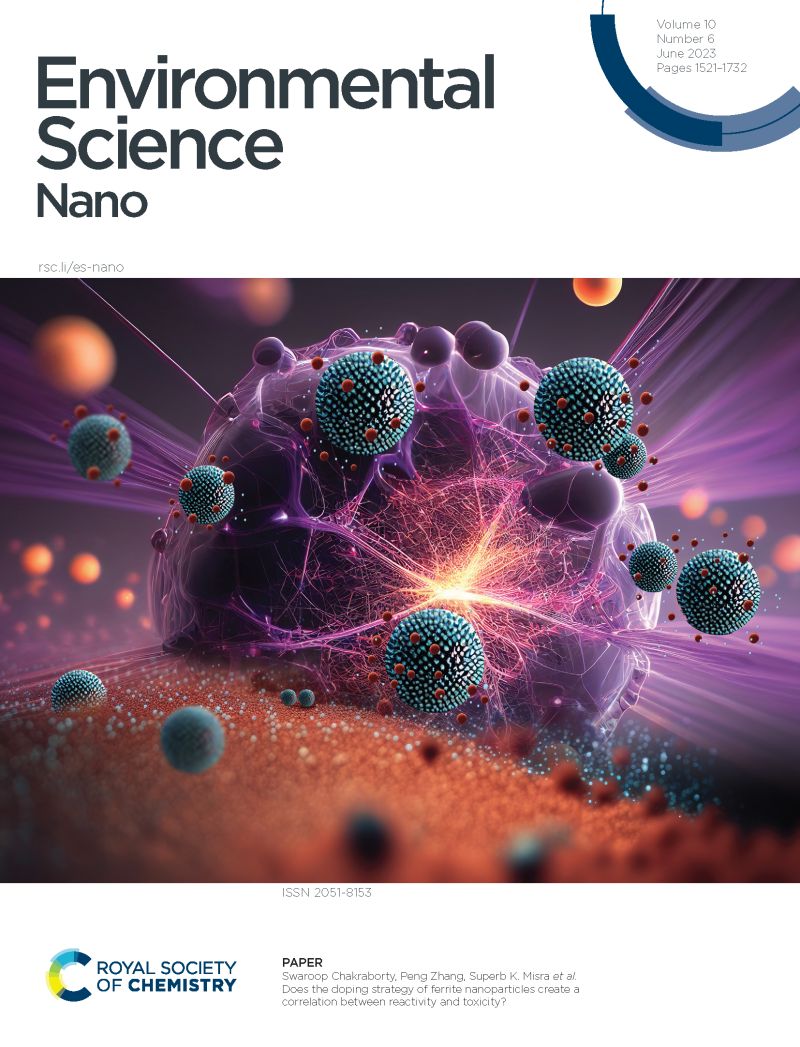Non-radical oxidation of TBBPA and TBBPS in soil using Fe and Cu co-doped sulfurized carbon nitride: A comparative study of peroxymonosulfate and peroxydisulfate activation
IF 5.1
2区 环境科学与生态学
Q1 CHEMISTRY, MULTIDISCIPLINARY
引用次数: 0
Abstract
The non-radical oxidation pathways in persulfate-based advanced oxidation processes (PS-AOPs) offer significant potential for soil and groundwater remediation. However, the construction of non-radical systems and the underlying reaction mechanisms remain insufficiently understood. In this study, Fe and Cu co-doped sulfurized carbon nitride (FeCuS@GFs) were distributed on the surface of graphite felt for non-radical oxidation pathways. FeCuS@GFs activated peroxydisulfate (PDS) and peroxymonosulfate (PMS) to generate electron transfer process and Fe(IV) active species as the primary non-radical oxidation pathways, respectively. FeCuS@GFs exhibited high efficiency in removing tetrabromobisphenol A (TBBPA) and tetrabromobisphenol S (TBBPS) from aqueous matrices. Comparative analysis demonstrated that Fe(IV) active species exhibited higher reactivity than electron transfer process for degrading TBBPA/S. Density functional theory (DFT) calculations and experiments further revealed that TBBPS was more resistant to non-radical oxidation than TBBPA. Additionally, soil properties, including pH, Fe-containing minerals and organic matter, influenced the efficiency of electron transfer processes and Fe(IV) active species. FeCuS@GFs/PMS system achieved nearly complete removal of TBBPA/S from various soil samples, highlighting its superior applicability for soil and groundwater remediation. This study provides novel insights into the role of non-radical oxidation pathways in their potential for actual soil and groundwater treatment.铁和铜共掺杂硫化氮化碳对土壤中TBBPA和TBBPS的非自由基氧化:过氧单硫酸根和过氧二硫酸根活化的比较研究
过硫酸盐基高级氧化工艺(PS-AOPs)中的非自由基氧化途径为土壤和地下水修复提供了巨大的潜力。然而,非自由基体系的构建和潜在的反应机制仍然不够清楚。在本研究中,Fe和Cu共掺杂的硫化氮化碳(FeCuS@GFs)分布在石墨毡表面,用于非自由基氧化途径。FeCuS@GFs分别激活过氧二硫酸盐(PDS)和过氧单硫酸盐(PMS)生成电子转移过程和Fe(IV)活性物质作为主要的非自由基氧化途径。FeCuS@GFs对四溴双酚A (TBBPA)和四溴双酚S (TBBPS)具有较好的去除效果。对比分析表明,Fe(IV)活性组分对TBBPA/S的降解表现出比电子转移过程更高的反应活性。密度泛函理论(DFT)计算和实验进一步表明,TBBPS比TBBPA具有更强的抗非自由基氧化能力。此外,土壤性质(包括pH、含铁矿物和有机质)影响电子传递过程的效率和Fe(IV)活性物质。FeCuS@GFs/PMS系统几乎完全去除了各种土壤样品中的TBBPA/S,突出了其在土壤和地下水修复中的优越适用性。这项研究为非自由基氧化途径在实际土壤和地下水处理中的潜在作用提供了新的见解。
本文章由计算机程序翻译,如有差异,请以英文原文为准。
求助全文
约1分钟内获得全文
求助全文
来源期刊

Environmental Science: Nano
CHEMISTRY, MULTIDISCIPLINARY-ENVIRONMENTAL SCIENCES
CiteScore
12.20
自引率
5.50%
发文量
290
审稿时长
2.1 months
期刊介绍:
Environmental Science: Nano serves as a comprehensive and high-impact peer-reviewed source of information on the design and demonstration of engineered nanomaterials for environment-based applications. It also covers the interactions between engineered, natural, and incidental nanomaterials with biological and environmental systems. This scope includes, but is not limited to, the following topic areas:
Novel nanomaterial-based applications for water, air, soil, food, and energy sustainability
Nanomaterial interactions with biological systems and nanotoxicology
Environmental fate, reactivity, and transformations of nanoscale materials
Nanoscale processes in the environment
Sustainable nanotechnology including rational nanomaterial design, life cycle assessment, risk/benefit analysis
 求助内容:
求助内容: 应助结果提醒方式:
应助结果提醒方式:


